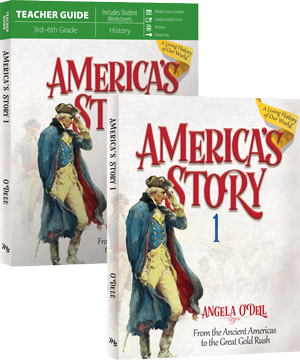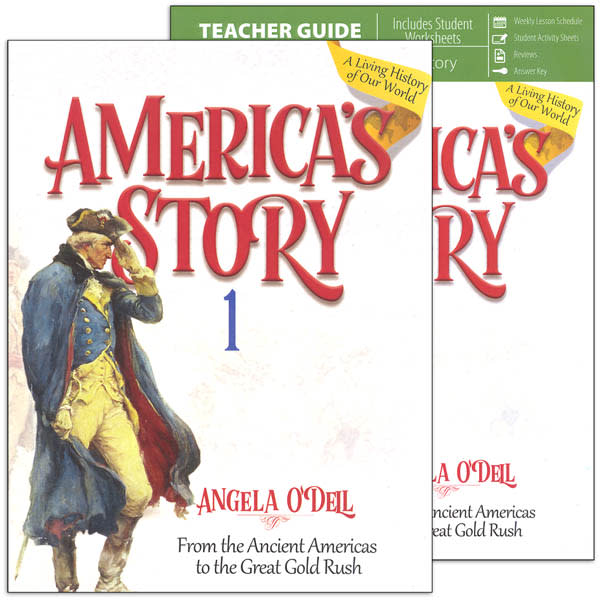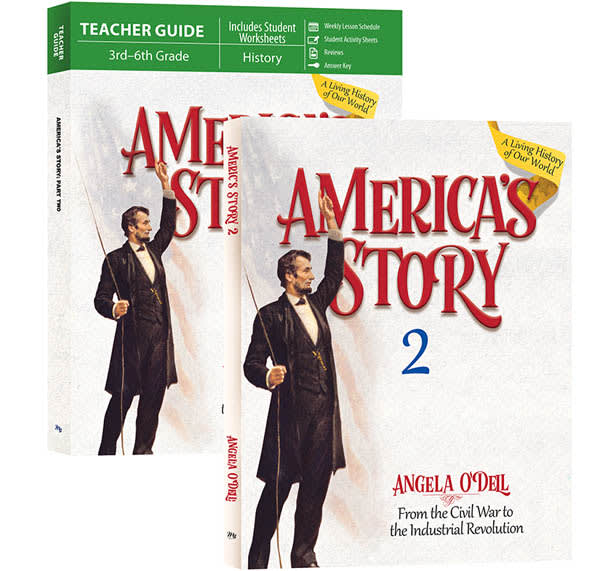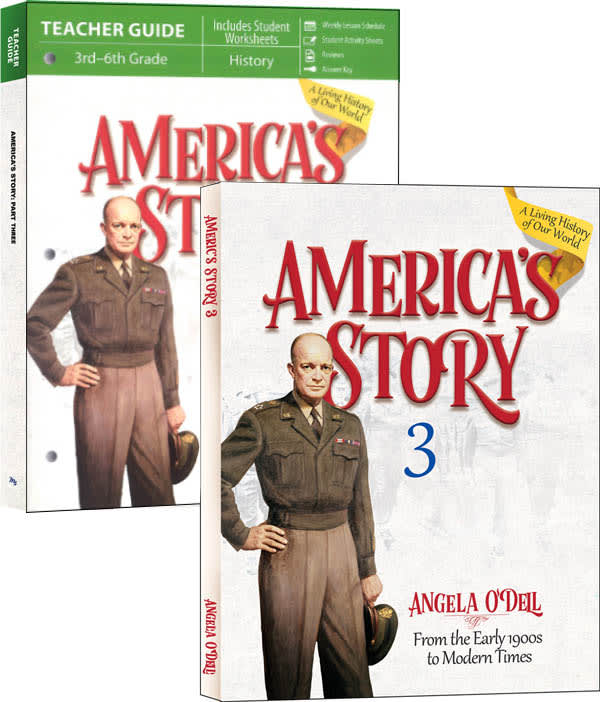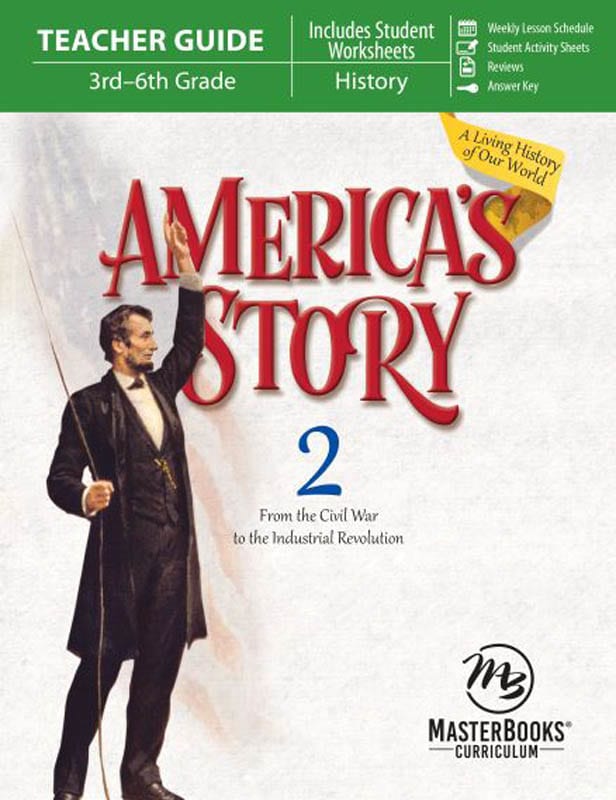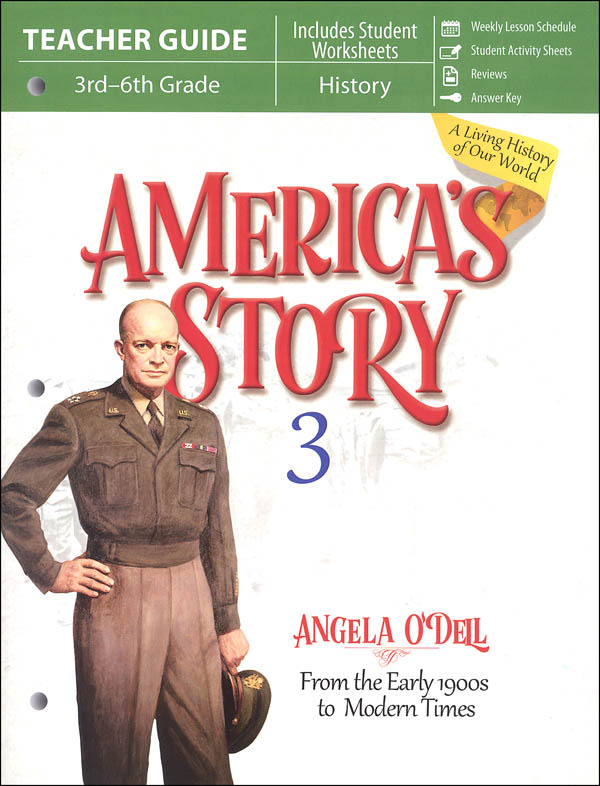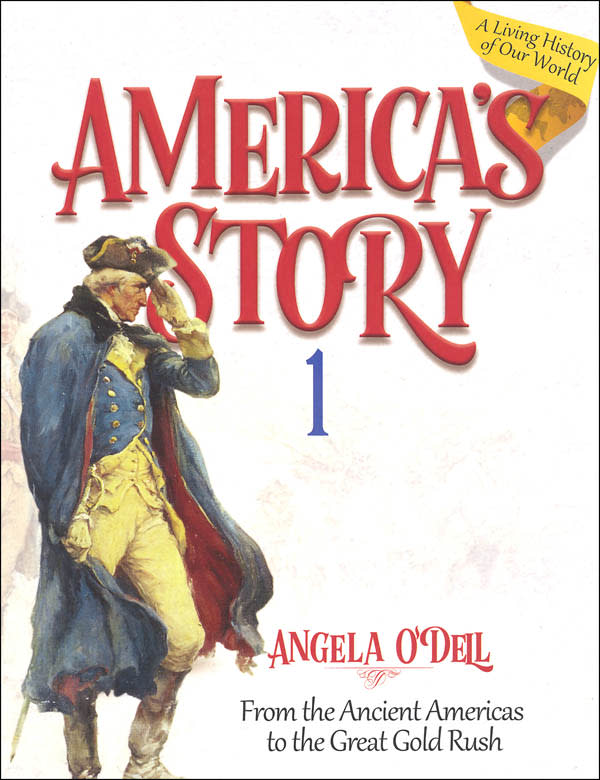Angela O’Dell has written the “A Living History of Our World” series covering both U.S. and world history. The America’s Story series covers U.S. history in three courses, while The World’s Story will eventually be a series of three courses that cover world history from Creation to the present day. This review focuses on the three America’s Story courses which were written for children in grades three through six:
America’s Story 1: Ancient Americans to the Great Gold Rush
America’s Story 2: From the Civil War to the Industrial Revolution
America’s Story 3: From the early 1900s to Modern Times
The reading level is essentially the same through all three courses, so you can use each course with students anywhere within the range of grade levels. Because these books use a storytelling approach, historical coverage is not comprehensive. Nevertheless, there are so many stories that students will certainly learn about many of the main events and key people. Students can create a timeline using resources at the back of each teacher guide so they are able to visualize how people and events relate to one another.
Each course has a textbook and a teacher guide. The soft-cover, non-consumable textbooks are printed in full color and are heavily illustrated with photos, maps, and other images.
Teacher guides have some teaching information and an answer key at the back, but they serve primarily as the source for reproducible activity pages to be handed out to students. These three-hole-punched pages can be removed and put into a binder. Because there are more than 300 such pages, it makes sense in most cases to purchase the teacher guide as a digital file unless you intend to use the course with only one student. In that case, you could just give the original printed pages to the student.
Teacher guides also have cumulative review activity pages to be used after quarterly review days plus a final review quiz. The final review has students fill in blanks with correct answers, but other review activities include crossword puzzles, matching columns, word search puzzles, short-paragraph answers (possibly responded to with oral narrations), multiple-choice questions, and a few other types of activities.
O’Dell titles the entire series for both American and world history as “A Living History of Our World,” since it reflects Charlotte Mason’s recommendation that history, as well as other subjects, be taught with what she described as living books—books that are lively and interesting. For history, this means reading the stories of history rather than just names, dates, and events. To that end, O’Dell writes in a very personal, storytelling style that should appeal to children of all ages.
Narration, a key element in Charlotte Mason's methodology, plays a prominent role throughout this series with frequent narration breaks in the text where the parent is to present an opportunity for students to narrate what they have learned from the material that has just been read. (For a narration, children will retell what they have learned in their own words.) Key points that should be included in those narrations are provided for parents in the teacher guides. Partly, because of the oral narrations, the books are ideally read aloud to children rather than assigned for independent reading. However, I expect that by fifth or sixth grade some students will prefer to read the text on their own. Parents might have students do some written narrations rather than oral ones. The teacher guides include one written narration page that can be used, although you can always have students do more.
Teacher guides have a page written specifically to the teacher at the beginning of the material for each chapter. The teacher pages each have a materials needed list, suggested responses for oral narrations, and an optional Digging Deeper activity suggestion.
Following the teacher page for each chapter are several reproducible activity pages. Among the activities are prompts for written narrations for older students, drawing, completing graphic organizers, questions to be answered with complete sentences, map activities, copywork, vocabulary work, puzzles, artist studies, composition assignments, creative writing, timeline activities, and creative design work (e.g., design a farm you might have had during the time of George Washington, from America’s Story 1, p. 167). Not all types of activities are included for every lesson, but most lessons have activities to choose from that will suit students with different learning styles.
America’s Story courses are presented from a Christian worldview, although Christian content appears sporadically. By the third volume, a conservative outlook on government and politics also becomes evident.
Summary
The design of America's Story is especially well suited for homeschooling situations. Each course can be easily adapted to use with children across a range of grade levels. In addition, there is plenty of guidance for parents as they lead students through lessons and activities. Charlotte Mason’s ideas have been used to some extent. However, some activities are more prescriptive than Mason would have used, asking for more structured and predictable accountability from students. This seems to me a balance that many parents will appreciate.




